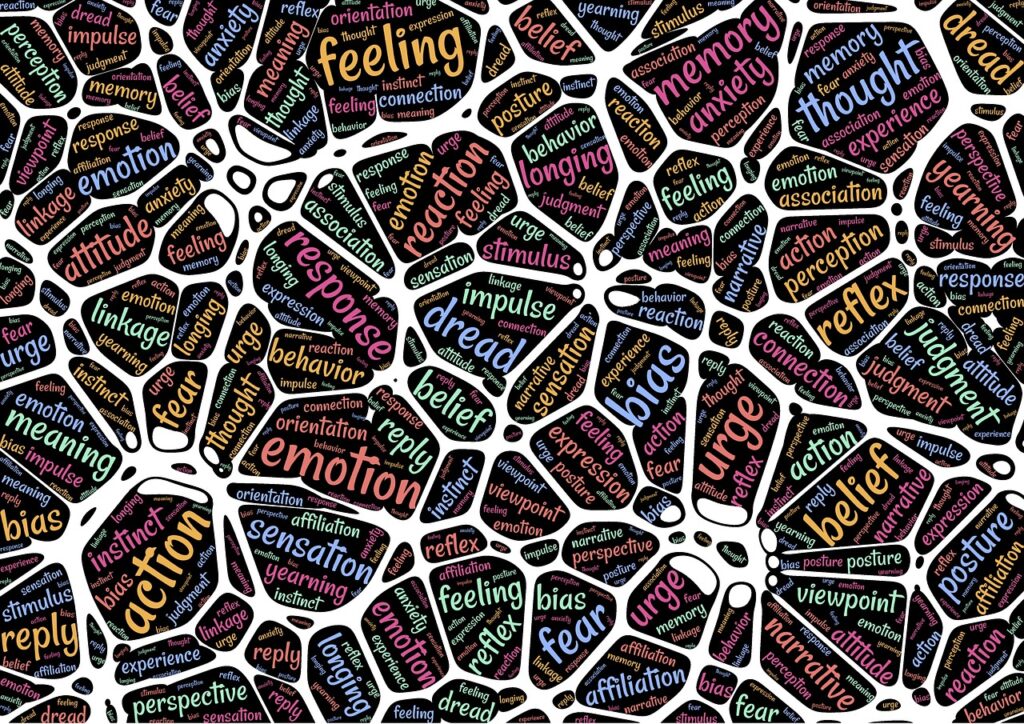Imagine being able to train your brain to improve its functioning just like you train your muscles at the gym. Well, that’s the essence of neurofeedback. Neurofeedback is a technique that allows individuals to gain real-time insights into their brain activity and learn how to regulate it through targeted exercises and feedback. By harnessing the power of the mind-body connection, neurofeedback has shown promising results in treating various conditions such as anxiety, ADHD, and even enhancing athletic performance. In this article, you will discover how neurofeedback works, its potential benefits, and how it is revolutionizing the field of brain training.
Neurofeedback
Neurofeedback is a non-invasive therapeutic technique that allows individuals to self-regulate their brain activity. It is a powerful tool that can help improve various aspects of mental health and cognitive functioning. By providing real-time feedback on brainwave patterns, neurofeedback enables individuals to gain awareness and control over their brain activity, ultimately leading to positive changes in thoughts, emotions, and behaviors.

Overview
Neurofeedback, also known as EEG biofeedback, is a type of biofeedback that specifically targets brainwave patterns. It utilizes advanced technology to monitor and measure brainwave activity through electrodes placed on the scalp. The information gathered during a neurofeedback session is then relayed to the individual in the form of visual or auditory feedback, allowing them to observe and modify their brain activity in real-time.
History
Neurofeedback has a rich history that dates back to the 1960s when it was first introduced by researchers and clinicians. Over the years, significant advancements have been made in understanding the brain and how it functions. This, in turn, has led to the refinement and development of neurofeedback techniques and equipment. Today, neurofeedback is widely recognized as a safe and effective treatment option for various neurological and psychological conditions.
How Neurofeedback Works
Neurofeedback works on the principle of operant conditioning, which involves reinforcing desired behaviors or brainwave patterns. During a neurofeedback session, individuals are connected to a computer or EEG machine that records their brainwave activity. This activity is then processed and translated into visual or auditory feedback, such as a moving image or a tone.
As individuals observe the feedback, they are encouraged to focus and engage in activities that promote the desired brainwave patterns. For example, if the goal is to increase alpha waves, the individual may be asked to relax and visualize calming scenarios. With repeated sessions, the brain learns to produce the desired brainwave patterns more consistently, leading to improved self-regulation and overall brain function.
Benefits of Neurofeedback
Neurofeedback offers a wide range of benefits for individuals seeking to improve their mental health and cognitive functioning. One of the primary advantages is its non-invasive nature, as it does not involve any medication or surgery. This makes neurofeedback a safer alternative to traditional treatment methods, especially for those who may have adverse reactions to medications.
Furthermore, neurofeedback has been shown to be effective in reducing symptoms associated with various conditions, such as anxiety, depression, attention deficit hyperactivity disorder (ADHD), and post-traumatic stress disorder (PTSD). It can also enhance cognitive performance, including memory, attention, and focus.

Conditions Treated with Neurofeedback
Neurofeedback has been successfully used to address a wide range of neurological and psychological conditions. Some of the common conditions treated with neurofeedback include:
-
ADHD: Neurofeedback training can help individuals with ADHD gain better focus, reduce impulsivity, and improve overall attention span.
-
Anxiety and Depression: By targeting brainwave patterns associated with relaxation and emotional regulation, neurofeedback can help alleviate symptoms of anxiety and depression.
-
Autism Spectrum Disorder (ASD): Neurofeedback has shown promise in improving social interaction, communication, and emotional regulation in individuals with ASD.
-
Sleep Disorders: Neurofeedback can assist individuals in achieving a more balanced and restful sleep pattern by training the brain to produce the appropriate brainwave patterns associated with deep relaxation and sleep.
Neurofeedback Training Process
Neurofeedback training typically involves a series of sessions conducted over a specified period of time. At the beginning of the training, an initial assessment is conducted to establish baseline brainwave patterns and identify specific areas of focus. Based on the assessment results, a personalized training plan is created.
During each session, the individual is seated comfortably and electrodes are attached to their scalp to measure brainwave activity. The feedback is then provided through a computer monitor or headphones, allowing the individual to visually or audibly perceive their brain activity in real-time. The individual is encouraged to engage in activities that promote the desired brainwave patterns, such as deep breathing exercises, visualizations, or mindfulness techniques.
Over time, as the individual becomes more proficient in self-regulating their brain activity, the training protocol may be adjusted to target specific areas of improvement. Regular progress assessments are conducted to monitor changes and make necessary modifications to the training plan as needed.

Types of Neurofeedback Systems
There are several types of neurofeedback systems available, each with its own unique features and applications. The most commonly used systems include:
-
Frequency-based neurofeedback: This type of neurofeedback focuses on training specific brainwave frequencies, such as alpha, theta, or beta waves. It aims to enhance or decrease the activity of these frequencies to promote desired mental states or address specific symptoms.
-
Z-score neurofeedback: Z-score neurofeedback utilizes a statistical approach to normalize brainwave patterns based on an individual’s age and specific characteristics. It compares an individual’s brainwave activity to a normative database, allowing for personalized and precise training.
-
LORETA neurofeedback: Low-Resolution Electromagnetic Tomography (LORETA) is a neurofeedback technique that combines EEG data with brain imaging to target specific regions of the brain. It provides a more detailed analysis of brain activity and enables targeted training for specific neurological conditions.
Neurofeedback vs. Biofeedback
While neurofeedback is a subset of biofeedback, there are some key differences between the two. Biofeedback encompasses a broader range of techniques that involve providing individuals with real-time feedback on physiological processes happening in their bodies, such as heart rate, skin temperature, or muscle tension.
Neurofeedback, on the other hand, specifically focuses on monitoring and training brainwave patterns. It provides individuals with the opportunity to directly influence their brain activity and promote self-regulation. While both neurofeedback and other forms of biofeedback can be beneficial, the targeted approach of neurofeedback makes it particularly effective for addressing brain-related conditions and improving cognitive functioning.

Effectiveness and Limitations of Neurofeedback
Neurofeedback has been extensively researched and has shown promising results in treating various conditions. Numerous studies have demonstrated its effectiveness in reducing symptoms of ADHD, anxiety, depression, epilepsy, and migraines, among others. It has also been used in peak performance training for athletes and artists to enhance focus, creativity, and mental resilience.
However, it is important to note that neurofeedback may not be a universal solution for all individuals or conditions. While some individuals may respond positively to neurofeedback, others may require a combination of neurofeedback and other treatment modalities for optimal results. Additionally, individual variability in brainwave patterns and treatment response can influence the effectiveness of neurofeedback. Therefore, it is essential to consult with a qualified healthcare professional before starting neurofeedback training to determine if it is the appropriate treatment option and to establish realistic expectations.
Future Developments in Neurofeedback
As our understanding of the brain continues to advance, so does the potential for further developments in neurofeedback. With ongoing research and technological advancements, we can expect improvements in the precision and personalization of neurofeedback training. This may involve the integration of brain imaging techniques, such as functional magnetic resonance imaging (fMRI) or neurofeedback protocols that target specific neural circuits or regions of the brain.
Additionally, advancements in virtual reality and gaming technology may enhance the engagement and effectiveness of neurofeedback training. Virtual environments could be utilized to simulate real-life scenarios and provide individuals with more immersive and tailored feedback, improving the overall outcomes of neurofeedback therapy.
In conclusion, neurofeedback is a powerful tool that allows individuals to gain control over their brain activity and improve various aspects of mental health and cognitive functioning. With its non-invasive nature and potential for targeted training, neurofeedback offers a safe and effective treatment option for a wide range of conditions. As research and technology progress, we can look forward to further advancements in the field of neurofeedback and its potential to transform the way we approach brain health and well-being.

